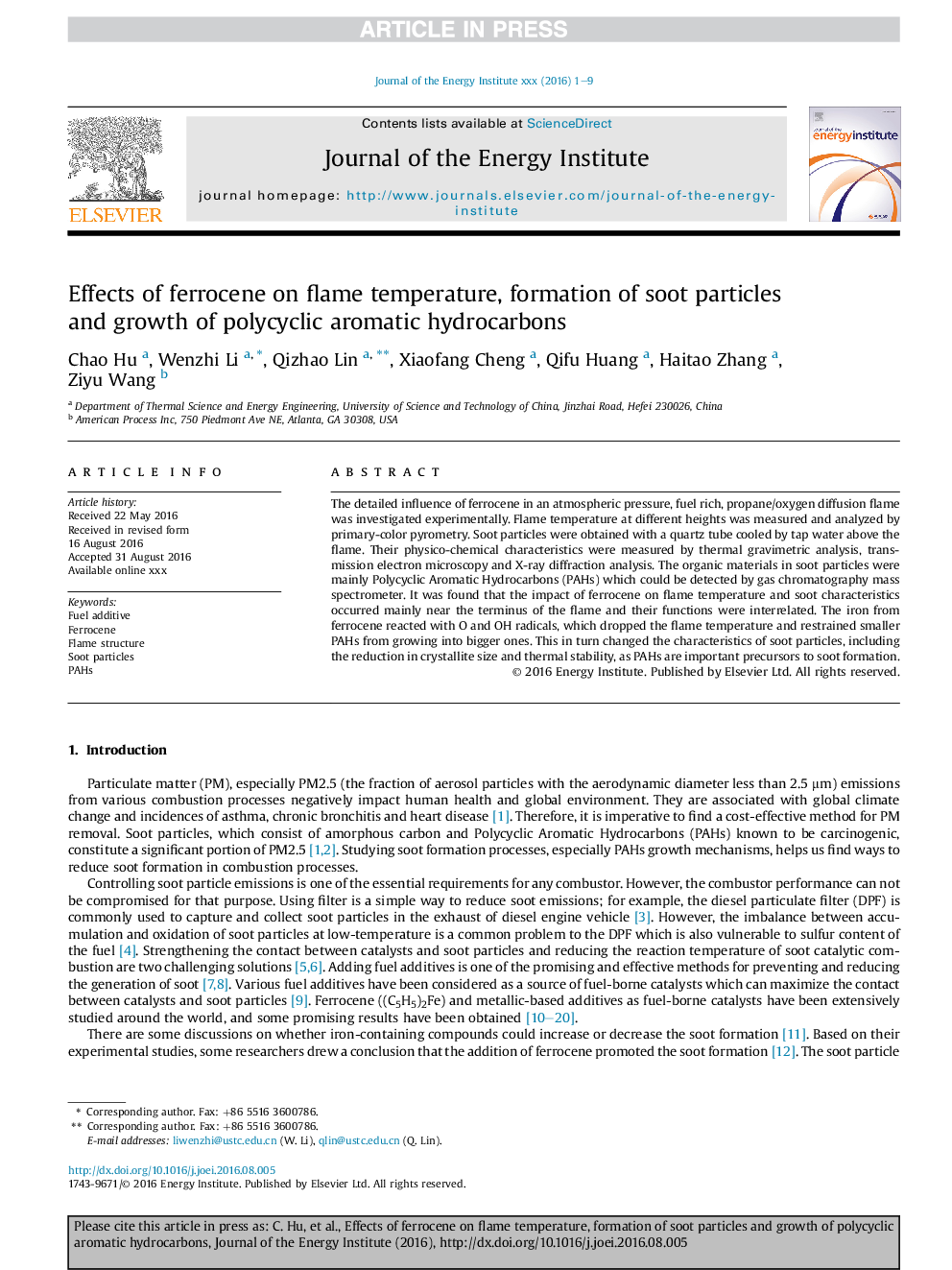| Article ID | Journal | Published Year | Pages | File Type |
|---|---|---|---|---|
| 8108804 | Journal of the Energy Institute | 2017 | 9 Pages |
Abstract
The detailed influence of ferrocene in an atmospheric pressure, fuel rich, propane/oxygen diffusion flame was investigated experimentally. Flame temperature at different heights was measured and analyzed by primary-color pyrometry. Soot particles were obtained with a quartz tube cooled by tap water above the flame. Their physico-chemical characteristics were measured by thermal gravimetric analysis, transmission electron microscopy and X-ray diffraction analysis. The organic materials in soot particles were mainly Polycyclic Aromatic Hydrocarbons (PAHs) which could be detected by gas chromatography mass spectrometer. It was found that the impact of ferrocene on flame temperature and soot characteristics occurred mainly near the terminus of the flame and their functions were interrelated. The iron from ferrocene reacted with O and OH radicals, which dropped the flame temperature and restrained smaller PAHs from growing into bigger ones. This in turn changed the characteristics of soot particles, including the reduction in crystallite size and thermal stability, as PAHs are important precursors to soot formation.
Related Topics
Physical Sciences and Engineering
Energy
Energy Engineering and Power Technology
Authors
Chao Hu, Wenzhi Li, Qizhao Lin, Xiaofang Cheng, Qifu Huang, Haitao Zhang, Ziyu Wang,
